9629 Second Street NW
ALBUQUERQUE, NM 87114
Mailing Address:
9629 Second Street NW
ALBUQUERQUE, NM 87114
Phone: 505-926-1426
MAKE AN INQUIRY
View our WEBSITE
EIN: 85-0332760Founded: 1982
Profile Last Updated November 27, 2024
Public Charity
MISSION & PROGRAMS
Mission:To improve the lives of individuals with physical, cognitive, emotional, and/or social needs through equine-assisted activities including innovative riding and ground work programs.
Our organization conducts Equine Assisted Services in accordance with the EQUUS Foundation Guidelines on Qualifications of Organizations Conducting Equine Assisted Services (EAS).
Our organization does not provide outreach and/or public education programs involving horses.
100% of our total programs and services are equine-related.
Our organization is directly responsible for the care and shelter of equines involved in our programs.
Our organization does not CURRENTLY use satellite, overflow, foster, and/or outreach facilities.
Please describe what steps your organization takes to ensure that:
1) all interactions between your equines and people are mutually beneficial and conducted in accordance with the Guidelines for Human-Equine Interactions stated below;
2) all equines in the care of our organization and/or equines that participate in the organization's program have access to clean drinking water at all times; nutritious food in sufficient quantity, including natural forage such as pasture grass and/or hay; appropriate veterinary, farrier, and dental care; shelter and protection from the weather; sufficient safe space to move around comfortably on a daily basis; and daily opportunity to freely interact and have contact with other equines:
1)• Cloud Dancer Programs and activities involving all human-equine interactions always consider the comfort and dignity of the equine as paramount and promote the utmost respect for the equine as a sentient partner and not as a commodity or inanimate object.
• The programs and activities are designed to not cause distress, to not force an equine to exhibit unnatural behavior, and to be safe for both the equines and the humans.
• The programs and activities respect and protect all aspects of the individual welfare of the equines involved, including the appropriate portrayal and involvement of the equines depending on temperament.
• The programs and activities are always conducted in a careful manner that minimizes the impact on the equines and their environment and supervised by personnel who are appropriately trained and have the authority to remove an equine from participation upon signs of stress. A contingency and first aid plan should be in place in the event of an unforeseen emergency.
• The organization has a written policy as to how the equines are selected for participation, how each equine in each program is continuously monitored for stress and well-being, what mechanisms are in place to allow the equines to 'opt out' of the activity, how safety is managed and maintained, and how each program is consistent with the organizations' mission.
2) At Cloud Dancers we highly value our equine partners. Each of our horses has access to clean drinking water at all times; they are each fed a diet tailored specifically to their individual needs, including both Timothy grass hay and alfalfa (depending on the horse). We ensure that each horse is visited routinely by our farrier and more often if we detect any issue with their hooves. We provide veterinary care both routinely and whenever any of our horses needs medical attention, including with their teeth. Our facility includes individual stalls that open onto individual outdoor runs adjacent to the large turnout area, where they can freely interact with each other whenever they’re not working in our programs. We also routinely turn the entire herd into our large outdoor arena, where they have ample space to walk, trot, or run.
Equine Assisted Services (EAS):
Our organization provides the following Equine Assisted Services (EAS):
Therapeutic/Adaptive Riding
Therapeutic/Adaptive Unmounted Horsemanship
Psychotherapy/Counseling
Personal Development Learning
Professional Development Learning
4: Total number of Equine Assisted Service Providers at Cloud Dancers Therapeutic Horsemanship
1 Amanda Ruffin
FACILITY PARTICIPATION:
Cloud Dancers Therapeutic Horsemanship
RELATIONSHIP: Volunteer
SERVICES PROVIDED:
Therapeutic/Adaptive Riding
DEGREES, LICENSES AND/OR CERTIFICATIONS
Amanda Ruffin is a PATH Certified Therapeutic Horsemanship Instructor.
2 Karen Molony
FACILITY PARTICIPATION:
Cloud Dancers Therapeutic Horsemanship
RELATIONSHIP: Employee
SERVICES PROVIDED:
Therapeutic/Adaptive Riding
Therapeutic/Adaptive Unmounted Horsemanship
DEGREES, LICENSES AND/OR CERTIFICATIONS
Karen Molony is Cloud Dancers' lead PATH-Certified Therapeutic Riding Instructor for its Therapeutic Horsemanship Program and its PATH International Certified Equine Specialist in Mental Health and Learning for its EAL and EAP Programs.
3 Makenna Hulett
FACILITY PARTICIPATION:
Cloud Dancers Therapeutic Horsemanship
RELATIONSHIP: Employee
SERVICES PROVIDED:
Therapeutic/Adaptive Riding
Therapeutic/Adaptive Unmounted Horsemanship
DEGREES, LICENSES AND/OR CERTIFICATIONS
Makenna Hulett is Cloud Dancers' second PATH-Certified Therapeutic Riding Instructor.
4 Sharon Grady
FACILITY PARTICIPATION:
Cloud Dancers Therapeutic Horsemanship
RELATIONSHIP: Independent Contractor
SERVICES PROVIDED:
Psychotherapy/Counseling
Personal Development Learning
DEGREES, LICENSES AND/OR CERTIFICATIONS
M.S. in Counseling, Prescott College; Licensed Professional Counselor, New Mexico
Overview of our programs involved with providing EAS to individuals with special needs:
Our Therapeutic Horsemanship Program (THP) includes both mounted and unmounted recreational activities centered on improving our clients’ independence, communication and interpersonal skills, physical and mental resilience, and behavior. Many of our clients are from low- to middle-income families and have disabilities including autism, ADHD, Down Syndrome, cerebral palsy, brain injury, stroke, multiple sclerosis, developmental delays, anxiety, depression, PTSD, and behavior disorders. They range in age from 5 to 70 years and represent a diverse population. The program offers 8-week sessions of activities with horses in a safe, compassionate, and structured setting. Through instructor-guided interactions with the horse and assisted by volunteers, clients develop their capacity to follow instructions, make decisions, and establish relationships that give them a strong sense of accomplishment, confidence, and satisfaction. These learned skills often carry over into other parts of the lives. The program especially benefits children’s well-being by improving their communication abilities, cognitive functioning, and behavioral characteristics associated with educational success. PATH-certified instructors develop goals, with input of riders and/or parents/guardians that meet needs for developing core and muscle strength, increasing physical flexibility and balance, enhancing communication and listening skills, improving fine motor skills, and more. Fun activities to build fine motor skills might include drawing a mystery card from a basket, or putting mail in a mailbox, or retrieving colorful vegetables from the fence and putting them in our pot of vegetable soup, or tossing a small ball into a basketball hoop, all on the back of a horse. Flexibility, balance and core strength may show improvement from the rhythmic gait of a horse being similar to the human gait. Guiding a horse requires good posture with heads up and eyes in the direction the rider wants to go. During lessons riders also learn about horse care and anatomy, grooming and tacking. Both group and private riding lessons are offered. All lessons are provided by PATH Certified Therapeutic Riding Instructors.
Our Equine-assisted Psychotherapy (EAP) program partners with GD Psych Services of Albuquerque to provide mental health learning for personal growth, as well as therapy for those who may be experiencing suicidal ideations, depression, anxiety, and PTSD, among others. All activities are unmounted and conducted by a New Mexico-licensed counselor with extensive EAP experience and a PATH International Certified Equine Specialist in Mental Health and Learning. The objectives of EAP sessions include developing skills in emotional regulation, problem-solving skills, empathy, and social skills while interacting with the horse.
Our Equine-assisted Learning (EAL) program focuses on the development of life skills by learning to work with horses. Clients have an opportunity for personal growth, team building, problem solving, leadership development, academic skills, professional development, and critical thinking through half- or all-day workshops. Offered by a New Mexico-licensed counselor who is also certified as an Equine Assisted Psychotherapist, these workshops focus on better ways to communicate with the horse which, in turn, improves both the participants’ quality of life by enhancing trust, honesty, and connection, and for professionals, the opportunity to transfer their learning to their professional work. Workshops are led by a professional, licensed counselor with extensive EAL experience and a PATH International Certified Equine Specialist in Mental Health and Learning.
Research/Medical Use of Equines:
Our organization has never made, and would not ever consider making, equines available for research studies or medical training that involves invasive procedures and/or that which may cause pain or suffering to the equine.
Religious Affiliation:
Our organization does not promote religious education, religious purposes, or a specific religious faith or use donations for religious education or religious purposes; require participants to be of a certain faith; require participation in religious, instruction, activities or services; or require participation in prayer, worship, religious instruction or other religious activities as a condition of receiving social or secular services offered.
Auction Donation:
Our organization has never allowed, or would not consider allowing, an equine to be sold, transferred, released, or otherwise placed into possession of any person or organization that would cause or allow the equine to be sold at auction for slaughter.
POLICIES: INTAKE, ASSESSMENT & TRAINING
Prior to a horse being accepted and/or arriving at the facility, the organization has the following policies in place:The owner of a potential equine is interviewed over the phone or in person prior to seeing the equine
The owner completes an application/contract which constitutes the agreement between the owner and our organization when the equine is acquired from the equine's owner other than by seizure or by abandonment
If health records are not available or are out-of-date, our veterinarian will administer appropriate vaccinations
A health certificate signed by a veterinarian and dated no more than seven days prior to arrival is provided to our organization either prior to or upon arrival of the equine attesting to the health status of the equine
The equine is evaluated at its place of residence
The owner is financially responsible for the shipping of the equine to and from the organization
Trial Period: Check all that apply:
Equines are on trial for up to 30 days
During the trial period, the organization accepts financial responsibility for the care of the equine, including board, feed, shoeing and any necessary veterinary care, up to a fixed amount agreed upon by the organization and the owner
The trial period may be terminated by either the organization or the owner for any reason
Equines are on trial up to 60 days
Equines are on trial for 60 or more days
The trial period may be reduced based on the equine's progress
During the trial period, the organization accepts total financial responsibility for the care of the equine, including board, feed, shoeing and any necessary veterinary care
During the trial period, the owner/donor is financially responsible for the care of the equine, including board, feed, shoeing and any necessary veterinary care
Upon intake, the organization has the following quarantine policy in place:
The equine is not quarantined
The equine is confined to a designated and separate area for isolation and quarantine at the facility for a prescribed period of time
The equine is confined to a designated and separate area for isolation and quarantine off-site for a prescribed period of time
The typical length of quarantine is: Horses are not quarantined
Following arrival of the equine at the facility, the following is performed:
Physical examination to include temperature, pulse and respiration by a veterinarian upon arrival
Physical examination to include temperature, pulse and respiration by a trained staff member upon arrival
A Henneke Body Conditioning Score or other body conditioning score is assigned by a veterinarian upon arrival
A Henneke Body Conditioning Score or other body conditioning score is assigned by a trained staff member upon arrival
Photographs are taken of each equine upon arrival at the facility and kept with the equine's health records
Physical examination by a farrier
Physical examination by a dentist
The equine is microchipped if the equine has not been microchipped
Horses are assessed for following skills and behaviors:
Retrieval from a pasture/paddock
Leading with a halter and lead rope
Temperament, disposition and attitude, such as rated from very calm to very high spirited
Saddling
Bridling
Lunging
Mounting and dismounting
Riding at the walk
Riding at the trot
Riding at the canter
Riding by a beginner and/or unbalanced rider
Tolerance to unusual objects and loud noises
Known vices, i.e., cribbing, biting, kicking, weaving, stall walking, etc
Grooming
Bathing
Clipping
Tolerance to multiple handlers at the same time
Loading onto and unloading off a trailer
Jumping
Driving (Pulling a carriage)
Our organization has the following policies and procedures in place pertaining to the ongoing assessment of horses in its care:
Physical examination by a veterinarian at least annually
The Henneke Body Condition score or other body conditioning score is updated at least annually by the veterinarian
Vaccinations are administered at least annually
Equines at our facility may be treated by an equine chiropractor
Equines at our facility may be treated by an equine acupuncturist
Equines at our facility may be treated by an equine massage therapist
The Henneke Body Condition score or other body conditioning score is updated at least annually by a trained staff member
Photographs are taken of each equine monthly and kept with the equine's health records
Photographs are taken of each equine annually and kept with the equine's health records
Equines at our facility may be treated by an equine nutritionist
Our organization has the following policies and procedures in place pertaining to the weight-carrying or workload capabilities of horses/equines that are ridden in our care:
Our organization evaluates the weight-carrying and workload limitations for each equine that is ridden at least annually
Our organization maintains a written record of the weight-carrying and workload limitations for each equine that is ridden
Our organization does not evaluate the weight-carrying and workload limitations for each equine that is ridden
No equines are ridden; not applicable
The following variables are considered in determining the weight-carrying and workload limitations for each equine that is ridden:
Equine age, weight, breed, body condition, fitness, balance, health and soundness
Equine conformation to include the top line, length of back, strength and width of loin, bone density (measured by the circumference of the cannon bone just below the knee)
Size, shape, condition and angle of the hooves
Participant weight, height, body proportions, balance, fitness and riding skills as well as behavioral issues and safety concerns
Weight and proper fit of the saddle and other equipment
Terrain and footing in the working environment
Duration and frequency of working sessions, as the frequency with which an equine is subjected to maximum weight carrying and/or workload
Nature and pace of work, repetitive or varied, radius of turns, degree of incline and regularity of footing when equine is subject to maximum weight-carrying capacity
Temperature and/or weather conditions
Seasonal impact on the equines' workload and weight-carrying capabilities and limitations
Our organization does not evaluate the weight-carrying and workload limitations for each equine that is ridden
No equines are ridden; not applicable
Horses provided formal training (groundwork or riding): As needed; no set schedule
Additional information about our intake, assessment & training policies and practices:
New horses are not quarantined because they come from known owners with records, and a health certificate dated no more than 7 days prior to arrival is required confirming that the horses are examined by a veterinarian prior to intake. New horses are, however, isolated until it is determined that they can be safely integrated into the herd.
POLICIES: BREEDING
The organization has the following policies related to breeding and stallions:Our organization does not conduct breeding of equines owned or under the care of our organization.
Our main facility where our organization conducts its programs does NOT breed equines.
One or more of the facilities where our organization conducts its programs, including foster/temporary care facilities, breeds equines
One or more of the facilities where our organization conducts its programs, including foster/temporary care facilities, are permitted to house stallions
POLICIES: EUTHANASIA
The organization has the following policies related to euthanasia:Our organization will never have an equine euthanized for space
Our organization will have an equine euthanized upon the recommendation of the veterinarian if the equine is a threat to itself, other equines, or people
Our organization will have an equine euthanized upon the recommendation of the veterinarian after all reasonable treatment options have been explored
Euthanasia is done on site when possible to decrease trauma from transport
Disposal of the carcass is handled within 24 hours
Our organization will never have an equine euthanized under any circumstances
Euthanasia is done at the veterinarian's facility
The following are authorized to administer the procedure for your organization in accordance with state laws:
Veterinarian
A certified euthanasia technician
Senior staff with appropriate training
Employee of animal control shelter or humane society with appropriate training
Veterinary student under the supervision of a licensed veterinarian
Not applicable. Our organization prohibits euthanasia under any circumstances
POLICIES: RE-HOMING
View Re-homing AgreementOur organization has the following re-homing (adoption/purchase) policies and procedures in place:
Our organization does NOT re-home an equine to first time equine owners
Our organization will only re-home an equine to a location where another equine resides
Potential adopters/purchasers must visit our organization and be observed with the equine on site
Our organization conducts a site visit of the adopter/purchaser's facility before the transfer of the equine to the adopter/purchaser's facility
Adopters/purchasers are NOT required to provide updates
All potential adopters/purchasers complete a written contract which constitutes the agreement between our organization and the new owner
The distance of a potential adopter/purchaser's home from our facility is a consideration for when re-homing an equine
Potential adopters/purchasers are encouraged to do a short-term, on-site foster with the equine
Our organization has the following policies and procedures related to horses that need to be retired, are no longer able to contribute to the mission of the organization, and/or are no longer manageable:
Equines may be found suitable homes by our organization
Equines may be returned to their owners
In the case an equine is unmanageable and demonstrates repeated dangerous behaviors, the equine may be euthanized upon the recommendation of the veterinarian
In the case an equine is unsound and/or unhealthy and cannot be treated to relieve suffering, the equine may be euthanized upon the recommendation of the veterinarian
Equines may remain at our organization for their lifetimes
Equines may be sent to auction
If a suitable home cannot be located within 12 months, the equine may be euthanized
The organization will accept financial responsibility for equines in the current care of the organization that need to be retired or are no longer able to contribute to the mission of the organization if all alternatives have been explored to find the equine an appropriate placement and space is not available for the equine to remain at the organization.
The uploaded Re-homing agreement includes the following re-homing (adoption/purchase) statements:
The agreement reflects that any individual or organization in possession of the equine as of the date of the agreement and any time thereafter is bound to not sell the equine at auction for slaughter or allow the equine to be sold, transferred, released, or otherwise placed into possession of any person or organization that will cause or allow the equine to be sold at auction for slaughter.
The agreement states that should the adopter decide to re-home the equine, the adopter must grant the organization first right of refusal prior to the equine being placed into the possession of any individual or organization intending to take possession of the equine for any reason.
The agreement states that should the adopter decide to re-home the equine, our organization must be notified of the name, address, and telephone number of any individual or organization intending to take possession of the equine for any reason prior to the equine being placed into the possession of such individual or organization.
The agreement states that the re-homed equine CANNOT be sold, adopted, transferred, auctioned, released, given away, or otherwise placed into the possession of another individual or organization under any circumstances and must be returned to our organization should the adopter decide that he/she is no longer able, or no longer wishes, to care for the equine.
The agreement states that should the adopter decide to re-home the equine, our organization must grant approval of any individual or organization intending to take possession of the equine for any reason prior to the equine being placed into the possession of such individual or organization, including being provided written notification of the name, address, and telephone number of any individual or organization intending to take possession of the equine for any reason.
The agreement states that the terms of our organization's agreement will be binding on any future individual or organization taking and/or in possession of the equine for any reason.
The agreement states that re-homed equines cannot be bred
The agreement states that if there is any breach of contract the equine must be returned to our organization
The agreement states that our organization reserves the right to make unannounced visits
The agreement states that our organization reserves the right to make scheduled visits
The agreement states that adopters/purchasers can return an equine to our organization free of charge
The agreement states that adopters/purchasers can return an equine to our organization for a fee
The agreement states that adopters/purchasers are required to provide updates (photos, vet records) for one year
The agreement states that adopters/purchasers are required to provide updates (photos, vet records) for two years
Our organization microchips all equines that are not already microchipped before the adoption and/or transfer of the equine if the organization has the authority to microchip the equine.
The agreement includes the microchip number of the equine.
The agreement states that adopters/purchasers are required to provide updates (photos, vet records) for as long as the adopter/purchaser is responsible for the care of the equine
None of the statements are included.
The organization does not re-home equines under any circumstances; our organization retains custody of our equines and ensures care of the equines for their lifetimes.
Our organization does not have the authority to transfer ownership and/or does not own any of the equines involved with our programs.
Our organization requires references from the following:
Veterinarian
Farrier
Personal/Other
Not applicable or no references required.
Transfer of ownership occurs: Immediately (at the time of adoption/purchase) or less than one year
The average equine re-homing (adoption/purchase) fee received by your organization:
Not applicable; None received
Additional information about our rehoming policies and practices:
The re-homing agreement is that we either return a horse to its owner (horses are provided to us by owners for a number of reasons including not able to trail ride any longer) when it can no longer participate in our program, or we re-home the horse with someone we know and trust.
Any individual or organization in possession of the equine as of the date of the agreement and any time thereafter is bound to not sell the equine at auction for slaughter or allow the equine to be sold, transferred, released, or otherwise placed into possession of any person or organization that will cause or allow the equine to be sold at auction for slaughter. They are also not allowed to breed any re-homed horse.
EQUINE CARE & SHELTER/FACILITY INFORMATION
Our organization does not CURRENTLY use satellite, overflow, foster, and/or outreach facilities.Total facilities at which our organization cares for and shelters horses used in our programs: 1
Cloud Dancers Therapeutic Horsemanship
9629 Second Street NW ALBUQUERQUE NM 87114
Currently operational
Total number of horses/equines currently involved with your programs, under your care, and/or owned by your organization at this facility: 5
Total number of horses at this facility NOT INCLUDING those counted above: 11
Maximum capacity of horses at this facility: 12
Does your organization own, lease or use a part of this facility? Use
Provide the contact information for the individual or organization responsible for investigating abuse in the county where the facility is located, including mailing address, email address, and phone information.
Bernalillo County Animal Care Services Enforcement and Emergencies: 505-468-7387 1 Civic Plaza NW Albuquerque, NM 87102
Does your organization conduct Equine Assisted Services (EAS) at this facility in accordance with the EQUUS Foundation Guidelines on Qualifications of Organizations Conducting Equine Assisted Services (EAS)? Yes
Total number of Equine Assisted Service Providers AT THIS FACILITY, including instructors, specialists, therapists, counselors, coaches and/or facilitators (full-time, part-time, volunteer, independent contractors, and/or providers accompanying clients) that conduct Equine Assisted Services (EAS) in accordance with the EQUUS Foundation Guidelines on Qualifications of Organizations Conducting Equine Assisted Services (EAS) AT THIS FACILITY: 4
Equine Assisted Service Providers Assigned to this Facility: (see Equine Assisted Service Provider Section below for details)
1. Amanda Ruffin
2. Karen Molony
3. Makenna Hulett
4. Sharon Grady
Grounds: Cloud Dancers Therapeutic Horsemanship (*Main) Currently operational This section is required.
Total acreage dedicated specifically to the horses: 1
Our organization has use of the following at this facility:
Structures/Barns: 2 Run-in sheds: 9
Pastures: 0 Paddocks/Pens/Turnout Areas: 1
Uncovered Outdoor Rings: 1 Covered Outdoor Rings: 0 Indoor Rings: 0
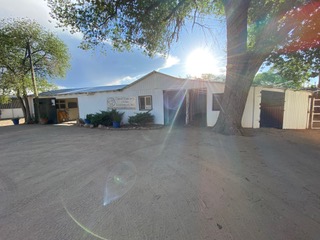
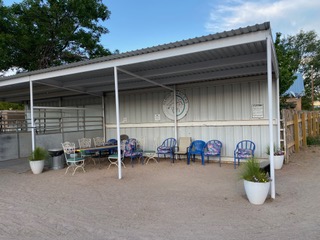
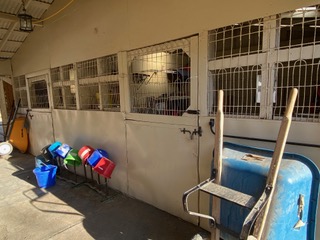
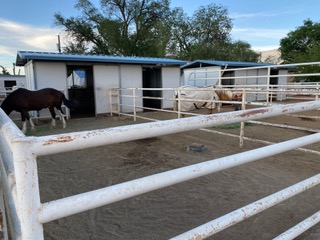
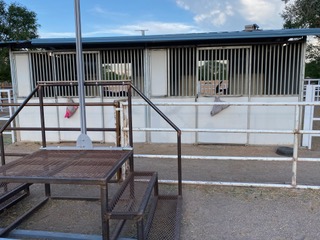
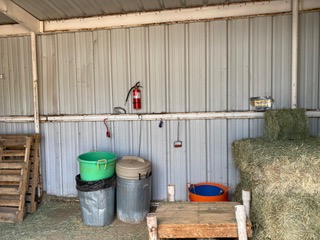
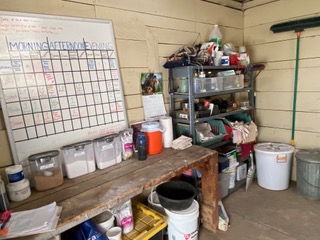
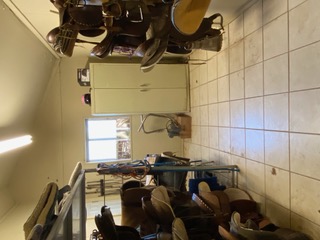

Are the organization's rules, restrictions and warnings (signage) conspicuously posted in easily accessible locations? Yes
Are the organization's emergency contacts, including veterinarian contact information, conspicuously posted in easily accessible locations? Yes
Are human and equine first aid kits easily accessible? Yes
Regarding all shelters where horses are housed including run-in sheds:
Do horses have assigned stalls in the barn/structure(s) or exclusively assigned shelter locations where they are separated from other horses with a barrier? Yes
How many hours per day, on average, are horses stalled or restricted to these sheltered exclusive shelter locations? 13-16
How often are the stalls/shelters cleaned, i.e., kept in good repair and free of standing water, accumulated waste, sharp objects and debris? 6-7 Days a Week
Do all stalls/shelters allow horses to lie down, stand up and turn around and provide protection from inclement weather (wind, sleet, rain, snow and extreme temperatures)? Yes
Are stalls/shelters kept in good repair, with adequate ceiling height, and free of standing water, accumulated waste, sharp objects and debris? Yes
Are floors constructed and maintained for both good drainage and traction? Yes
Is there a ventilation and circulation system in place to allow free flow of air to control temperature, and humidity, and to prevent air stagnation? Yes
Is wiring inaccessible to horses and maintained for safety in all areas of facility? Yes
Are fire prevention/protection measures (fire alarms, extinguishers and sprinkler systems) maintained and in good working order? Yes
Is there adequate lighting to ensure safety in all areas of facility? Yes
How many hours per day, on average, are horses turned out:
Equines are out 4 to 8 hours per day
The following describes the pastures at this facility:
This facility does not have pastures where equines can graze on pasture grass
This facility has a written plan in place for pasture management, which includes guidelines for seeding, fertilizing, irrigation, mowing, dragging, harrowing, manure removal, removal of debris, the control of poisonous plants, and a schedule for cleaning
A dedicated staff person(s) is responsible for pasture management
All pastures are fenced to prevent escape or injury
Barbed wire is used for fencing
Electric fencing is used; electric wires or tape fence are visibly marked
Fencing checks, such as broken or missing planks, loose fence posts, exposed or loose nails, detached wires, etc., are done regularly
Pastures are rotated
Pastures have natural protection for equines (i.e., trees)
Pastures have man-made protection for equines (i.e., shelters)
The following describes the turnout areas other than pastures at this facility:
This facility has a written plan in place for the maintenance of turnout areas, which includes a schedule for cleaning, manure removal, and dragging
All turnout areas are fenced to prevent escape or injury
Turnout areas have man-made protection for equines (i.e., shelters)
Fencing checks, such as broken or missing planks, loose fence posts, exposed or loose nails, detached wires, etc., are done regularly
This facility does not have turnout areas
A dedicated staff person(s) is responsible for the maintenance of turnout areas
Barbed wire is used for fencing
Electric fencing is used; electric wires or tape fence are visibly marked
The following policies and procedures are in place at the facility to restrict public access and to keep horses safe:
The property owner, staff member or caretaker lives on the premises and ensures that public access is restricted and is responsible for the security of the facility and equines
No Trespassing signs are posted
Hold Harmless signs are posted
Visitors are only permitted at specific times
Visitors are only permitted in specific areas
The perimeter of the property is fully fenced
A security guard is present at night
There is a practice in place to monitor equines overnight
By Appointment Only signs are posted.
Authorized Personnel Only signs are posted
Entrance gates are locked at night
The property is fitted with motion lights
The property is fitted with a security system monitored by police or a professional service
The property is fitted with a security system that is monitored internally by staff (or the property owner)
Equine Care/Emergency Preparedness: Cloud Dancers Therapeutic Horsemanship (*Main) 2025 and 2024 This section is required.
Horse Health Care/Barn Management Records: What system is used to collect and store health/horse care records?
Notebook or equivalent (technology not utilized)
The following items are consistent with our feed management plan and practices:
Equines are provided with individualized feeding plans, including supplements, according to the equine's age, breed/type, condition, size, work level and any health issues, consisting of nutritious food provided in sufficient quantity and access to adequate natural forage, or be fed daily, or as recommended by the organization's veterinarian
Feed plans are determined in consultation with a veterinarian
Supplement plans are determined in consultation with a veterinarian
Equines are fed grain in individual stalls
Equines are fed grain in groups
Staff and/or volunteers are trained in proper feed measurements and protocols and observed periodically to ensure they are feeding correctly
The feed chart is centrally located and updated as needed
The area(s) where hay, feed, grain, and supplements are stored are kept clean, free of debris and chemicals, and protected from weather and other animals in rodent-proof and mold-proof containers and grain bins
Feed, supplements and hay types are clearly labeled
Water sources, i.e., buckets, troughs, automatic waterers, etc. are kept clean, free of contaminants, debris and chemicals, protected from weather and other animals, and be positioned or affixed to minimize spillage.
Medications are kept in a secure area
Is clean, potable water available at all times for all equines, or if not at all times, at least twice daily? Yes
Hoof Care: How often is hoof care provided for each equine? Every 4-8 weeks and when an issue arises
Dental Care: How often is dental care provided for each equine? Annually and when an issue arises
Horse checks: How often are equines visually and physically checked by personnel at the facility? Every day or 6 days a week
Our organization has the following parasite and fly/insect control protocols in place, including remedies used to control flies and insects:
Our organization follows the parasite control guidelines of our veterinarian, including fecal testing and de-worming
Fly/Insect Control Remedies:
Premise Sprays/Insecticides
Fly Spray Repellent
Fly Masks
Fly Sheets
The following represent the biosecurity practices in place at facility:
Our organization follows the biosecurity guidelines of our veterinarian
Sick, affected and/or quarantined equines do not have contact with other equines or other animals
The organization has a written biosecurity plan
Staff are trained in best practices related to biosecurity
Volunteers are trained in best practices related to biosecurity
A specific individual is trained and assigned to care for sick, affected and/or quarantined equines
Sick, affected and/or quarantined equines are cared for last if the caretaker must also care for healthy equines
Restricted access signs are posted at primary points of access to sick, affected and/or quarantined equines
Hand sanitizers are available at all primary points of access to sick, affected and/or quarantined equines
Footbaths are available at all primary points of access to sick, affected and/or quarantined equines
Manure and bedding from sick, affected and/or quarantined equines is removed from the facility - not put in open air piles, and not spread on pastures
Quarantine areas, such as stalls, aisle ways, paddocks, and common areas, are cleaned (and needed, disinfected) after conclusion of the quarantine.
Equipment used by sick, affected and/or quarantined equines is not shared
Equipment used by sick, affected and/or quarantined equines is cleaned of organic debris and disinfected after each use
Latex gloves, or equivalent gloves, are worn when working with sick, affected and/or quarantined equines
Equines are not quarantined on arrival.
Trailers/vans used by sick, affected and/or quarantined equines are cleaned and disinfected after each use and cleaning takes place away from where equines are sheltered
Additional information on biosecurity:
In the case of possible infectious disease with our horses, the Cloud Dancers Therapeutic Horsemanship center implements the following biosecurity plan to include quarantine practices. • Limit Exposure: • Minimize Nose-to-Nose Contact: Avoid allowing horses to sniff each other's noses, as this can facilitate disease transmission. • Restrict Movement: Limit the movement of horses onto and off the property, especially if they are new or potentially sick. • Control Access: Implement strict access controls for visitors, including limiting their contact with horses and requiring handwashing or sanitizing. • Manage Shared Spaces: If shared spaces like wash racks or grooming areas are unavoidable, use cross-ties instead of tying horses to posts, and ensure thorough cleaning and disinfection after each use. • Avoid Communal Water Sources: Use individual water buckets and feed containers rather than relying on communal water troughs. • Quarantine and Isolation: • Quarantine New Horses: New horses should be isolated from the rest of the herd for a minimum of 14-30 days. • Monitor Health: Take and record temperatures twice daily during quarantine to detect early signs of illness. • Implement Hygiene: Use separate equipment (buckets, grooming tools, etc.) for quarantined horses, or thoroughly clean and disinfect shared items. • Hygiene Practices: • Handwashing: Wash hands thoroughly with soap and water or use hand sanitizer before and after handling horses, especially when moving between horses. • Clean and Disinfect: Clean and disinfect stalls, and equipment after each use, paying particular attention to areas where horses may have been in contact with surfaces. • PPE: Use personal protective equipment (PPE) such as gloves and coveralls when handling potentially sick horses or when working with horses after returning from events. Cloud Dancers does not own a trailer or van and only move healthy horses with an owner's equipment.
The following represent the manure removal practices in place at facility:
Manure is piled in an area where equines are not located
Manure is hauled, sold or given away
Manure piles are composted or spread on pastures
Our organization adheres to the manure management guidelines set by the state, local authorities, and/or our organization's veterinarian
Manure is stored in dumpster(s)
Manure piles are covered
The following steps are taken to help staff and volunteers readily identify each horse on the property:
Equines are assigned the same exclusive stall/shelter location each day
Name plates are located on the stall/shelter location
Equines wear halters with nametags
A notebook or binder with photos and information on each equine is easily accessible
Equine photos and profiles are available on the website
Staff/volunteers are provided training on conformation, markings, colors, and breeds
Team leaders work with new staff/volunteers until they are able to identify the equines
Photos are located on the stall/shelter location
A map/diagram is posted showing the location of each equine with equine names and photos
Staff and volunteers are provided with an information packet with equine profiles, including photos and detailed descriptions
Our organization has the following policies and procedures in place pertaining to tack, apparel and equipment:
All equines have specifically assigned tack, apparel and equipment that is not shared
Blankets, sheets and turn out apparel are fitted and utilized for each equine appropriate to the equine's needs and the weather conditions
Blankets, sheets and turn out apparel are cleaned regularly as needed
Tack is cleaned after each use
Tack is inspected for overall working condition before each use by trained personnel
Tack is assessed for fit before each use by trained personnel
Tack is assessed for fit by trained personnel when an equine's body condition changes
Tack is assessed for fit by trained personnel when an equine's disposition changes
This facility enlists the services of a professional saddle fitter at least once a year
Assigned tack is clearly labeled
Helmets are shared
Helmets are cleaned/disinfected after each use
Helmets are replaced after a fall
Helmets are replaced at least every five years.
Saddles are shared
Saddle pads are shared
Bridles are shared
Bits are shared
Blankets are shared
Sheets are shared
Turnout apparel is shared
Halters are shared
Tack is cleaned weekly
Tack is cleaned only when needed
Tack is stored in a climate-controlled location
No equines are ridden; not applicable.
Emergency Preparedness: Cloud Dancers Therapeutic Horsemanship: *Main This section is required.
The following plans, policies, and procedures are in place at the facility to handle emergencies and address weather related issues, fire safety procedures, and/or any additional hazardous scenarios the facility could potentially experience:
Emergency procedures are posted prominently
Emergency phone numbers are posted prominently
The facility maintains at least two weeks of hay, feed, shavings and medications
The facility collects and maintains medical information from staff, volunteers, and clients
The facility maintains appropriate liability and/or workers' compensation insurance
The organization has a written emergency preparedness/safety plan (EPP)
The facility owns or has access to a generator
Local fire department and/or the state's emergency planning department procedures
Medical emergencies for clients, staff, and volunteers
Medical emergencies for equines
Evacuation plans
Power outages
Fire
Natural Disasters - thunderstorm, hurricanes, earthquakes, tornados, etc
Protocols to notify emergency personnel
Building/facility exit plans
Terrorist attacks
The facility follows the specific procedures to help PREVENT emergency situations:
Smoking is strictly prohibited
NO SMOKING signs are posted prominently
Hay is stored away from permanent or temporary structures where equines are stalled
Permanent or temporary structures where equines are stalled are kept free of dust, cobwebs, trash, cleaning rags, and other flammable items
Aisles and doorways are kept clear
Heaters with automatic shutoff settings are used
How often are the following checked or performed?
Fire Extinguishers are checked: Monthly
Smoke detectors are checked: Monthly
Fence lines are checked: Weekly
Turnout Areas are checked: Daily
Sprinkler systems are checked: Not at all/NA
Fire drills are conducted: Annually
Review of safety protocols with staff are conducted: Quarterly
Review of safety protocols with volunteers are conducted: Quarterly
The Emergency Preparedness Plan is reviewed and updated: Quarterly
Equine Transportation: 2= Onsite: 1 (0 + 1) + Offsite: 1
2-horse van/trailer with truck:
0 Owned onsite 1 Access onsite but not owned 1 Access offsite;
3-horse van/trailer with truck:
0 Owned onsite 0 Access onsite but not owned 0 Access offsite;
4-horse van/trailer with truck:
0 Owned onsite 0 Access onsite but not owned 0 Access offsite;
6-horse van/trailer with truck:
0 Owned onsite 0 Access onsite but not owned 0 Access offsite;
8-horse van/trailer with truck:
0 Owned onsite 0 Access onsite but not owned 0 Access offsite;
10-horse van/trailer with truck:
0 Owned onsite 0 Access onsite but not owned 0 Access offsite;